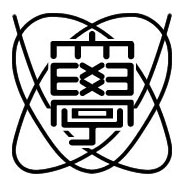
The University of Electro-Communications
In December of 1918, the University of Electro-Communications (UEC) was founded by the Wireless Association as the Technical Institute of Wireless-Communications. It became a part of Japan’s Ministry of Communications in April of 1942.
Three years later, the Technical Institute of Electro-Communications changed its name and was known as the Central Technical Institute for Wireless-Communications. By August of 1948 the Central Technical Institute for Wireless-Communications became a part of the country’s Ministry of Education.
Almost 31 years after it was founded, the University of Electro-Communications was formally established in May of 1949. During this time, the Faculty of Electro-Communications was established alongside the Department of Maritime Communication, Department of Communication Engineering, and the Department of Electric-Wave Engineering.
However, in March 1951, the Central Technical Institute for Wireless-Communications closed down. And in 1953, the Faculty of Electro-Communications was reorganized with the Departments of Maritime Communication and Communication Engineering being integrated into the Department of Radio Engineering and Operation. This year also saw the Department of Communication Management being established.
Decades later, the school opened other courses in electronics, mechanical engineering, material science and computer science. And in response to advanced innovations of science and technology, the UEC as it is known today, established courses in the growing fields of information science and information engineering and has also reorganized its existing fields of studies.
Today, UEC lives up to its reputation as an institution that produces highly qualified graduates, and has even boasted of its unrivaled scale of education and research in science and engineering, which covers an extensive range of studies beyond traditional expertise in electro-communications.
Among the centers that have been actively involved in developing human-friendly science and engineering is the Mitsuharu Matsumoto Laboratory. Here, students are geared towards engineering perspectives like information processing and mechatronics. They are also focused in scientific perspectives like physics, chemistry and mathematics. Their research also includes human-robot interaction and intelligent robotics.
Ahead of their 100th founding anniversary, scientists at the UEC have developed a baseball-playing robot that can even adjust to pitch speeds. It is equipped with an artificial brain that can read the speed of the pitch. This baseball playing robot, which has a 100,000 neuron fake brain, holds a fan-like bat and takes a swing at plastic balls.
When the ball is thrown at the robot, an accelerometer located at the back of the batting cage gets the information and records the flight of the ball, its speed and curves. The data is then relayed back to a machine that has the GPU-powered brain, which in effect determines when the robot should take a swing at the ball.